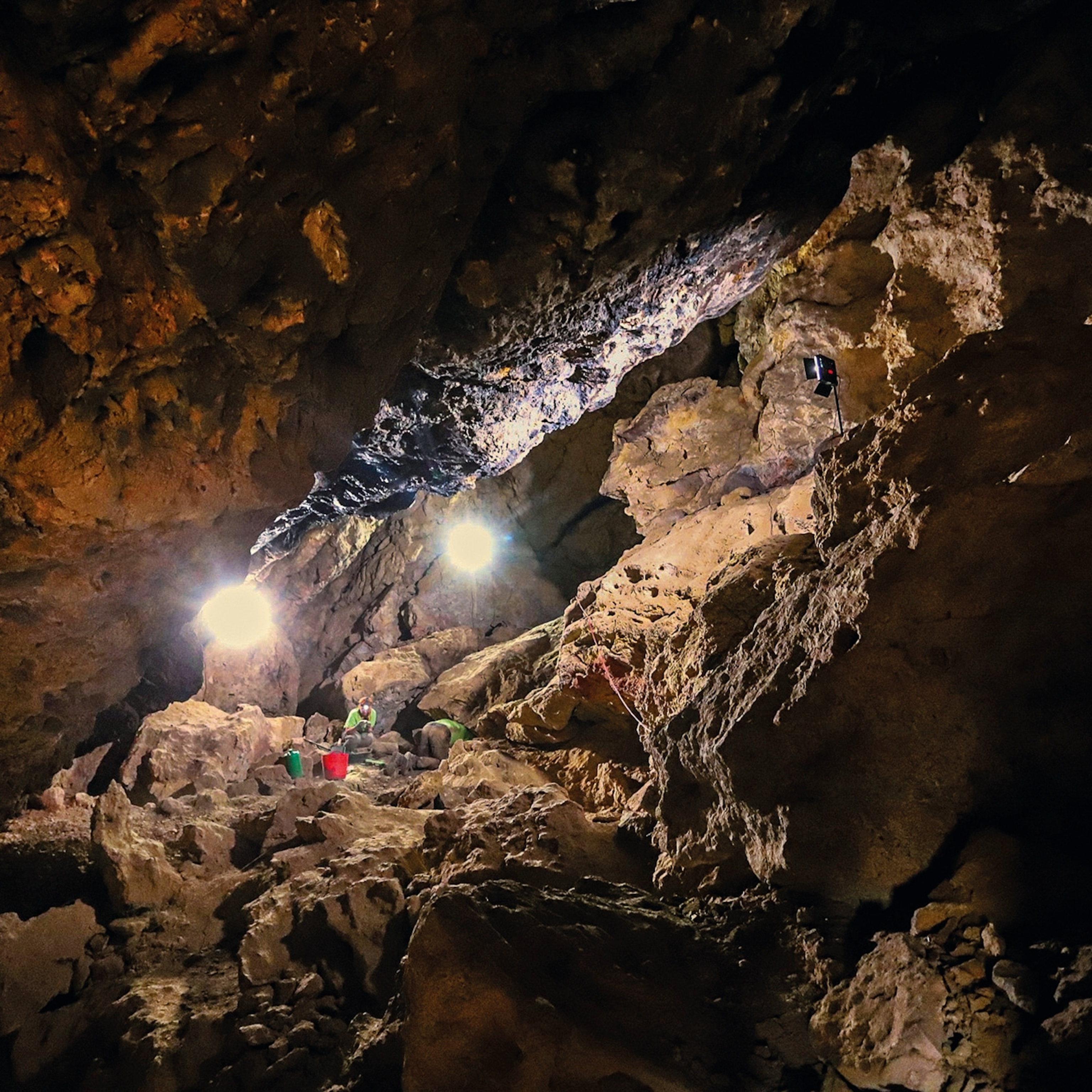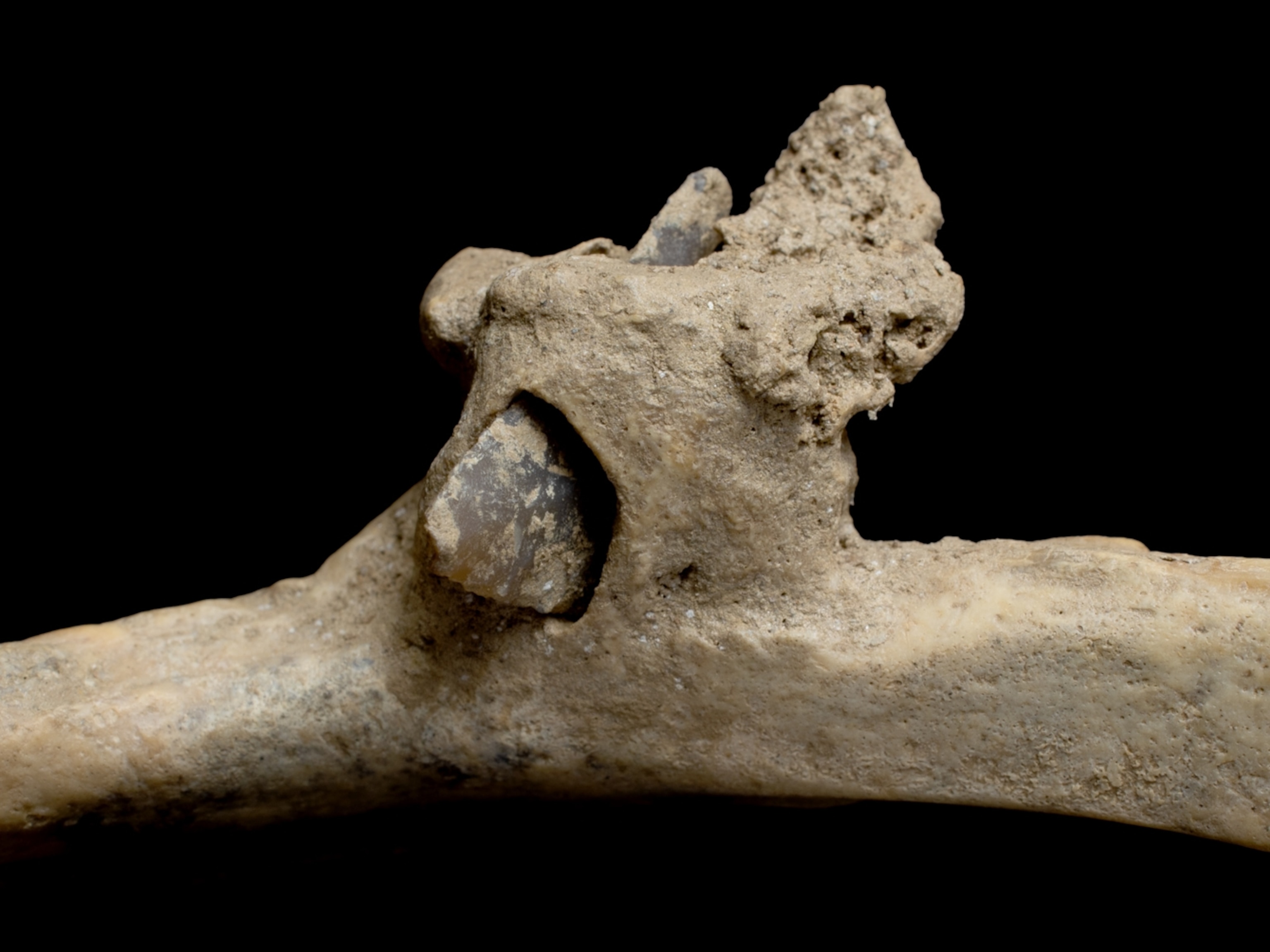5 Ways Smithsonian Uses 3-D Scanning to Open Up History
What happens when 3-D scanning is unleashed on America's attic?
You'd expect to find miniature models of President Abraham Lincoln's head, renderings of five-million-year-old whale skeletons, and even busts of long-dead employees gracing the shelves at the Smithsonian Institution in Washington.
There's a reason the Smithsonian is referred to as "America's attic."
But the 3-D scanners and printers that occupy the Smithsonian's 3D digitization lab in Landover, Maryland, come as something of a surprise.
One of the scanners is about the size of a toaster and is mounted on a tripod. A rotating mirror occupies a U-shaped cutout on top, so the machine can bounce a laser beam that can scan a room or cave. Another scanner resembles a robotic arm attached to a support base. Both look like they'd be more at home in a movie effects studio or NASA laboratory.
But the scanners have become a key part of the Smithsonian's quest to better understand the past. Researchers are using the 3-D scans and prints to study some of the world's most fragile artifacts—like art and paleontological finds thousands to millions of years old—without having to subject them to invasive, potentially damaging examinations.
Over the past four years, a pair of Smithsonian employees scanned dozens of objects from the organization's 19 museums and galleries, as well as some from the National Zoo and from field sites around the world.
Vince Rossi and Adam Metallo, who are affectionately known as the laser cowboys, have scanned everything from modern art installations to rare orchids to Chilean dig sites.
Both have fine arts backgrounds, and both previously made their livings making props for theater productions, before moving on to produce artifact models for Smithsonian museum exhibits. Rossi started with the Smithsonian in 2004 and Metallo in 2009.
For their museum work, creating a model of an ancient relic meant covering it in plaster to make a mold or sculpting its likeness out of clay.
After many curators objected to slathering ancient objects in plaster, Rossi and Metallo wrote an internal grant to the Smithsonian Institution to buy a 3-D scanner and printer.
"Our intention was to create better models for exhibits," said Rossi. But after getting the grant six years ago, he discovered that there was big demand for technology that allowed researchers to intensively study objects without having to touch them.
"Typically, 3-D scanning tools are non-contact," said Metallo. They work by measuring the return rate of a laser beam bounced off various parts of an artifact, which means no more touching with a tape measure or calipers.
That was music to the ears of many curators and scientists.
"The ability to 3-D scan an object—and not just bring it back to the real world through 3-D printing, but lending out that data itself—is incredibly powerful," said Rossi. "That's the most powerful use of the tools: dealing with data, as opposed to just 3-D printing."
Since the laser cowboys formally set up shop at the Smithsonian about four years ago, they've had all kinds of objects pass under the unblinking eyes of their instruments.
Here are 5 of the most intriguing scanned objects:
1. Deciphering a Cosmic Buddha sculpture. This striking figure has held on to his secrets for over 1,300 years. Covered in carvings depicting early Chinese Buddhist visions of heaven and hell, the nearly six-foot-tall Buddha sculpture stands on a pedestal at the Smithsonian's Freer and Sackler Galleries in Washington, sans head or hands.
While it's easy for visitors to navel-gaze at the limestone sculpture—the Buddha's belly sits at eye level—it's difficult for researchers to study.
"It's got a lot of low-relief carving," Metallo said. "[And] the way it's exhibited … even for the curator to investigate it, they'd have to go into the gallery and on a ladder to look at the shoulders and everything that's happening up there."
Previous attempts to figure out what the carvings mean have been only moderately successful, said Keith Wilson, curator of ancient Chinese art at the Freer-Sackler, two galleries dedicated to Asian art. Researchers had to work from photographs or ink rubbings of the carvings.
But by digitally scanning the piece, Wilson thought they could enhance the surface design in the computer and get a clearer picture of the carvings.
So he called in Metallo and Rossi to scan the sculpture last year. (Watch a time-lapse video of them at work.)
Using a laser arm scanner, the pair were able to create a digital model of the sculpture and its carvings for Wilson. The laser cowboys augmented their scan with a photographic technique called photogrammetry—using sequential images to get measurement data—which helped render the cavities where the sculpture's head and hands should be. (Watch a video showing the details of the Cosmic Buddha.)
The digital scans have already helped Wilson revise the age of the piece. "I've re-dated it to 550 to 557 A.D.," the curator said. Previous estimates placed it in the 581 to 618 A.D. age range.
Metallo says the next step is to unwrap and flatten out the digital model, "just like you flatten out a globe to turn it into a map."
That will enable researchers and the public to see the Buddha's carvings more easily, he said.
2. Saving prehistoric whale bones. Smithsonian paleontologist Nicholas Pyenson was in Chile's Atacama desert excavating fossil penguins, seals, and dolphins a few years ago when a colleague told him of a nearby site littered with five-million-year-old fossil whale skeletons.
"It was just dozens and dozens of whale skeletons," Pyenson recalls of the 2011 trip. It's not every day that scientists stumble on whale graveyards, and Pyenson remembers his first impressions of the find as "mind-blowing.”
But the trove of skeletons was in danger. Road crews were busy widening the Pan-American Highway, which ran right alongside the site, and were on a tight deadline.
So researchers had just one month to document as many of the 35 baleen whale skeletons as possible before the remains needed to be removed to make room for the highway.
Documenting bones while they are still in the ground can tell scientists a lot about where the animals died, how sediments entombed the bodies, and the condition of the bones and how they articulate. (See pictures of the excavation.)
Traditionally, researchers would have set up a meter-by-meter grid over the skeletons, sketching approximate locations of the fossils on paper, said Rossi, to create a kind of crime scene that can reveal important scientific information.
But the time crunch meant that detailing each skeleton by hand would be impossible. So Pyenson contacted the Smithsonian's 3-D digitization group.
Two weeks later, with money from the Smithsonian and the National Geographic Society, Rossi and Metallo were kneeling in the sand, scanning fossil whale skeletons.
"We did this by the seat of our pants, working 22-hour days," said Pyenson. "We were able to save a digital avatar of the site that was detailed enough to allow us to answer the scientific questions we wanted to ask."
Now, researchers can study the digital scans of the site to figure out how the bones fit together and how they may have ended up in the area.
Jumbled remains of disarticulated bones could indicate that water swept them into an area—like a fast-moving river depositing sediment in a lake bed—while intact skeletons could indicate a gentler deposition.
Although researchers are still studying the scans and the physical specimens, which are housed in a Chilean museum near the site, plans are afoot to print out a life-size model of one of the skeletons to put on display at the Smithsonian's National Museum of Natural History later this year. (Related: "New Ancient Members of Whale Family Found.")
3. Remodeling the "Hall of Extinct Monsters." Once known as the "Hall of Extinct Monsters," the 31,000-square-foot (2,880-square-meter) dinosaur hall at Washington's National Museum of Natural History will get a facelift next year. This renovation will be the largest in the museum's history.
The hall displays 27 dinosaurs, including Stegosaurus, Triceratops, and Diplodocus.
Several of the dinosaurs on display, including Stegosaurus stenops, are particularly valuable to researchers because they are "type specimens," meaning that they were the first of their species to be given scientific names.
Scientists also used the fossils when developing descriptions of the entire species—a kind of standard against which subsequent individuals would be compared.
"[The scans will] allow scientific study of those specimens remaining on display," wrote Matthew Carrano, curator of dinosauria at the museum, in an email.
The scans will also help researchers and Smithsonian staff to better and more precisely plan for new mounts of old specimens, he said.
Repositioning dinosaur skeletons isn't like moving your couch from one side of an apartment to another; workers can't just shove delicate specimens this way and that while deciding which position looks best.
The hope is that designers can use the digital scans when repopulating the exhibit. With the help of the 3-D scans, scientists can digitally render a skeleton and pose it in various places around a computer representation of the new hall to decide where it should go.
After pulling two all-nighters in April, Rossi and Metallo were able to capture about 80 percent of the hall and its fossil denizens, despite some tricky obstructed views, Metallo said. (Watch a video of them scanning the hall.)
4. Cradling contemporary art. Two pieces of contemporary art at Washington's Hirshhorn Museum and Sculpture Garden caught the laser cowboys' eyes because of the scanning and conservation challenges they presented.
If one were to ask how many people it would take to change a light bulb behind a piece of modern art called "Lunar Landscape", the answer would have to include two laser cowboys.
The piece is a three feet by two feet (0.9 meter by 0.3 meter) wall hanging made of a material called magnesite. The thin magnesite shells are perforated and covered with colored acetate gels so that light from bulbs in the back of the structure shine through.
It's one of the largest "Lunar" pieces created by American-born artist Isamu Noguchi—who spent seven months in an Arizona internment camp during World War II. Gwynne Ryan, sculpture conservator at the Hirshhorn, calls it "a prized piece in our collection."
Whenever workers needed to replace a spent bulb in the piece, however, they had to balance the work on whatever they could rig up—not an ideal arrangement for a valuable piece of art. Even soft material like pillows made conservators nervous, because the piece has strings that crisscross the front of it, said Ryan.
So Metallo and Rossi scanned the piece last year and printed a custom cardboard cradle for it. The interlocking pieces fit together like a puzzle—with the artwork resting on top—and can accompany the hanging if it ever goes into storage, said Ryan. Conservators don't have to worry about it as much anymore, she said.
The second Hirshhorn piece that Rossi and Metallo scanned is a wax sculpture called "From Hand to Mouth," which conservators have hesitated to loan out, largely because it's so delicate.
So in 2009, just before it made its way to a museum in Venice, Italy, the Smithsonian's Museum Conservation Institute scanned the sculpture, so that conservators would have a digital version on file.
In 2013, the Hirshhorn asked the digitization lab to scan the sculpture again to see if traveling had damaged it in any way.
"The good news was that there was very little deviation between one scan and the next," said Metallo.
Although the museum still keeps the contemporary artwork on a restricted lending list, the 3-D scan reassured conservators that the piece hadn't changed shape as much as they had feared, said Ryan.
5. A 140-year-old cold case. Robert Kennicott was a naturalist who died suddenly on the banks of the Yukon River while exploring the area for the Smithsonian in May 1866. He was interred at his family home, The Grove, in Glenview, Illinois.
Rumor had it that the 30-year-old committed suicide by swallowing strychnine, one of several toxins used in preserving specimens at the time. But the actual cause of death remained a mystery for over a century.
So in 2001, Kennicott's descendants and the staff at The Grove asked forensic anthropologists at the Museum of Natural History to investigate the death.
Researchers exhumed Kennicott's body and, after an exhaustive analysis, announced in 2010 that the probable cause of death was a heart condition called long Q-T syndrome. This condition has been known to fell athletes in the middle of games.
While forensic anthropologists had Kennicott's body, Rossi and Metallo were brought in to scan the naturalist's skull and print a 3-D model of it for a facial reconstruction and a bust.
A forensic artist placed tissue markers on the 3-D model to get a sense of what Kennicott's skin and tissue would have looked like, Rossi said.
The bust was on display at the National Museum of Natural History before making its way to the family home in Illinois.
Follow Jane J. Lee on Twitter.







